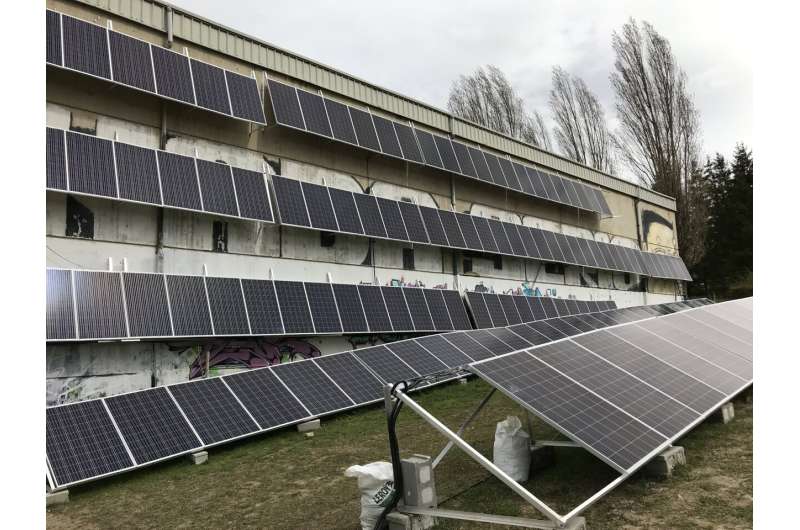Energy footprint found to be reduced by the alternative community lifestyle

A study conducted by the UPV/EHU's Ekopol and Life Cycle Thinking groups concludes that an alternative community lifestyle can reduce energy consumption due to the significance of the energy used in the goods and services consumed. Specifically, they have estimated that the energy footprint per inhabitant of the Errekaleor neighborhood (in Vitoria-Gasteiz) is 24% lower than the regional average.
The global transformation towards renewable, fair, democratic energy systems entails identifying the energy needs of citizens and taking the different lifestyles and consumption patterns of citizens into consideration. "The unlimited consumption model of today's society has already led to a crisis in energy and resources. So the need to reduce energy consumption in the countries of the Global North cannot be denied," say the members of the UPV/EHU's Ekopol and Life Cycle Thinking research groups.
Achieving this reduction requires the use of appropriate indicators or means to measure and compare energy consumption. To quantify global energy consumption and a country's consumption, the total primary energy supply is calculated using data provided by the International Energy Agency: total primary energy consumed in a country (including households, transport, industry and services). "But," as Dr. Estitxu Villamor highlights, "this indicator fails to take into account hidden energy flows, in other words, energy imported from other countries in the form of goods and services."
However, the energy footprint takes into account not only the total primary energy that has to be allocated to each country, but also the hidden energy flows, in other words, "the energy that is allocated to a producing country even though the goods may be consumed in another country." According to the researchers, this indicator is crucial in "making a real diagnosis of a country's energy consumption and, therefore, in designing energy transition policies."
An innovative methodology
The UPV/EHU researchers have used the Input-Output methodology for the first time to calculate the energy footprint on a regional (ACBC) and local level (the Errekaleor neighborhood in Vitoria-Gasteiz, which is the largest off-grid community in the Basque Country).
It has thus been shown, firstly, that the methodology is appropriate for calculating energy footprints on a neighborhood, regional, community or even state level; secondly, that the energy footprint provides us in today's globalized era with a more accurate measurement of energy consumption patterns; and, finally, that the alternative community lifestyle generates a lower energy footprint.
The results show that "although the energy consumed in the homes of the Errekaleor inhabitants (4.46 MWh per inhabitant per year) is, on average, 32% and 15% higher than that of the population of the ACBC and Spain, respectively, the energy footprint of the Errekaleor inhabitants (31.10 MWh per inhabitant per year) is, on average, lower than that of the inhabitants of the ACBC and Spain by 14% and 24% respectively."
This difference is due to the indirect consumption of energy embedded in products and services, which accounts for 81% of the total primary energy footprint in Spain, 75% in the ACBC and 66% in Errekaleor.
According to the researchers, "this shows that the main drivers of the energy footprint are related to what an individual actually consumes." In this regard, it should be highlighted that the electricity from the Errekaleor off-grid photovoltaic system contributes only 0.6% to the neighborhood's total energy footprint.
Finally, the researchers found that within the neighborhood itself, "different types of housing lead to big differences in the energy footprint: people living in families have a 33.5% lower footprint than those living alone (28.45 MWh per inhabitant per year compared with 42.79 MWh)."
The research concludes that people living alone in Errekaleor have, on average, a higher energy footprint than the inhabitants of the Basque Autonomous Community.
The work is published in the journal Sustainable Production and Consumption.
More information: Estitxu Villamor et al, Global Multi-Regional Input-Output methodology reveals lower energy footprint in an alternative community project, Sustainable Production and Consumption (2022). DOI: 10.1016/j.spc.2022.09.003
Provided by University of the Basque Country




















